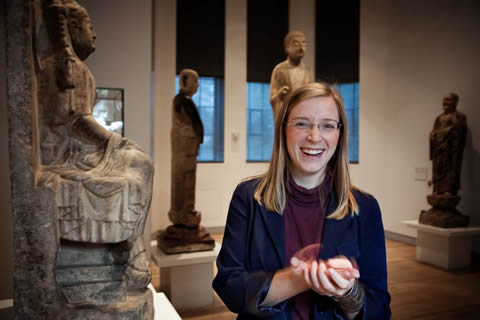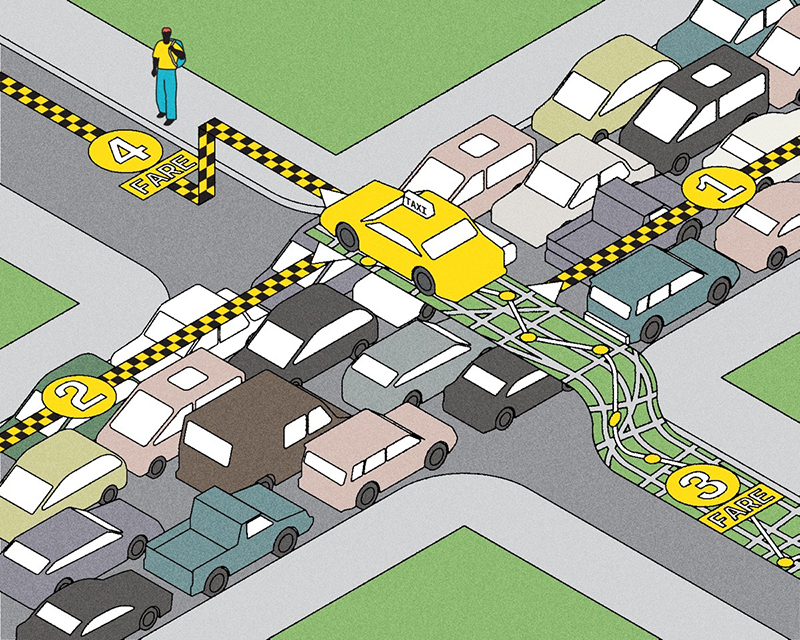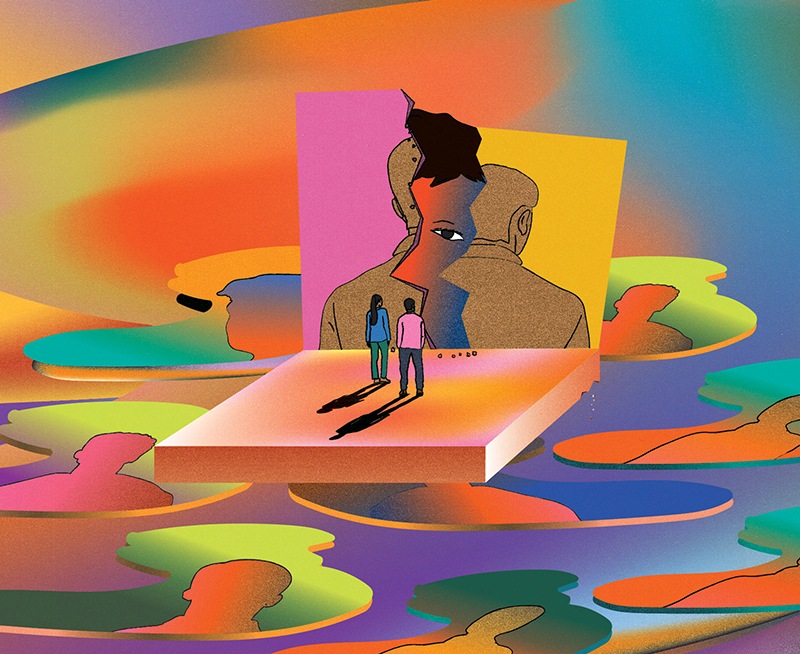The study of art history took on a whole new meaning for PhD student Sarah Richardson the day she met the “monk engineer.”
That’s the nickname for Sonam Paljor, a Buddhist monk whom Richardson encountered in a small Himalayan mountain town in the summer of 2009. Richardson was investigating the construction of a 40-metre-high Buddhist statue, which Paljor had overseen. The monk explained how the monument incorporated traditional artistic and architectural elements that have been used in Buddhist culture for centuries. For Richardson it was a rare opportunity to meet someone directly involved in the creation of an artwork she was studying.
“He wasn’t actually an engineer, but that’s what the people called him because they respected what he did – helping to build this enormous statue that’s now a tourist attraction, but also full of historical religious features and meaning,” says Richardson, 32, whose specialty is 14th-century Tibetan Buddhist art.
Richardson spent six weeks in the field assisting Kajri Jain, a visual studies professor at U of T Mississauga, with her research on modern Buddhist and Hindu statues in India. This unique aspect of Indian culture may yield interesting insights about a country that is emerging as a global economic force. Richardson’s role included photographing statues, interviewing artists, architects and craftspeople involved in creating them, transcribing interviews and developing detailed photo descriptions. Prof. Jain’s research will culminate in a book on the recent rise of monumental religious statues in India.
“I learned so much about how contemporary Indian monuments draw on religion for different reasons – to attract pilgrims, or to act as new sites of political and social power,” Richardson says. “Getting up close to this aspect of Indian culture opened so many doors.”
Recent Posts
People Worry That AI Will Replace Workers. But It Could Make Some More Productive
These scholars say artificial intelligence could help reduce income inequality
A Sentinel for Global Health
AI is promising a better – and faster – way to monitor the world for emerging medical threats
The Age of Deception
AI is generating a disinformation arms race. The window to stop it may be closing





